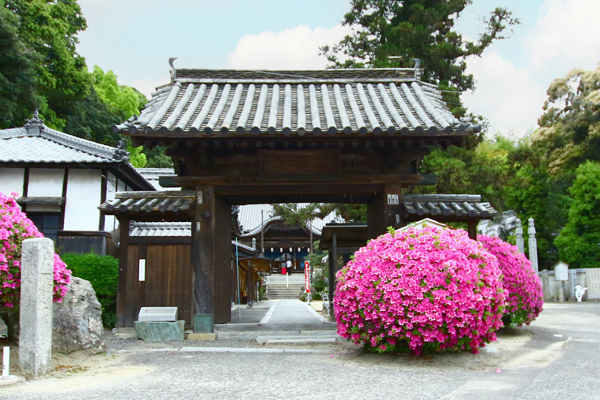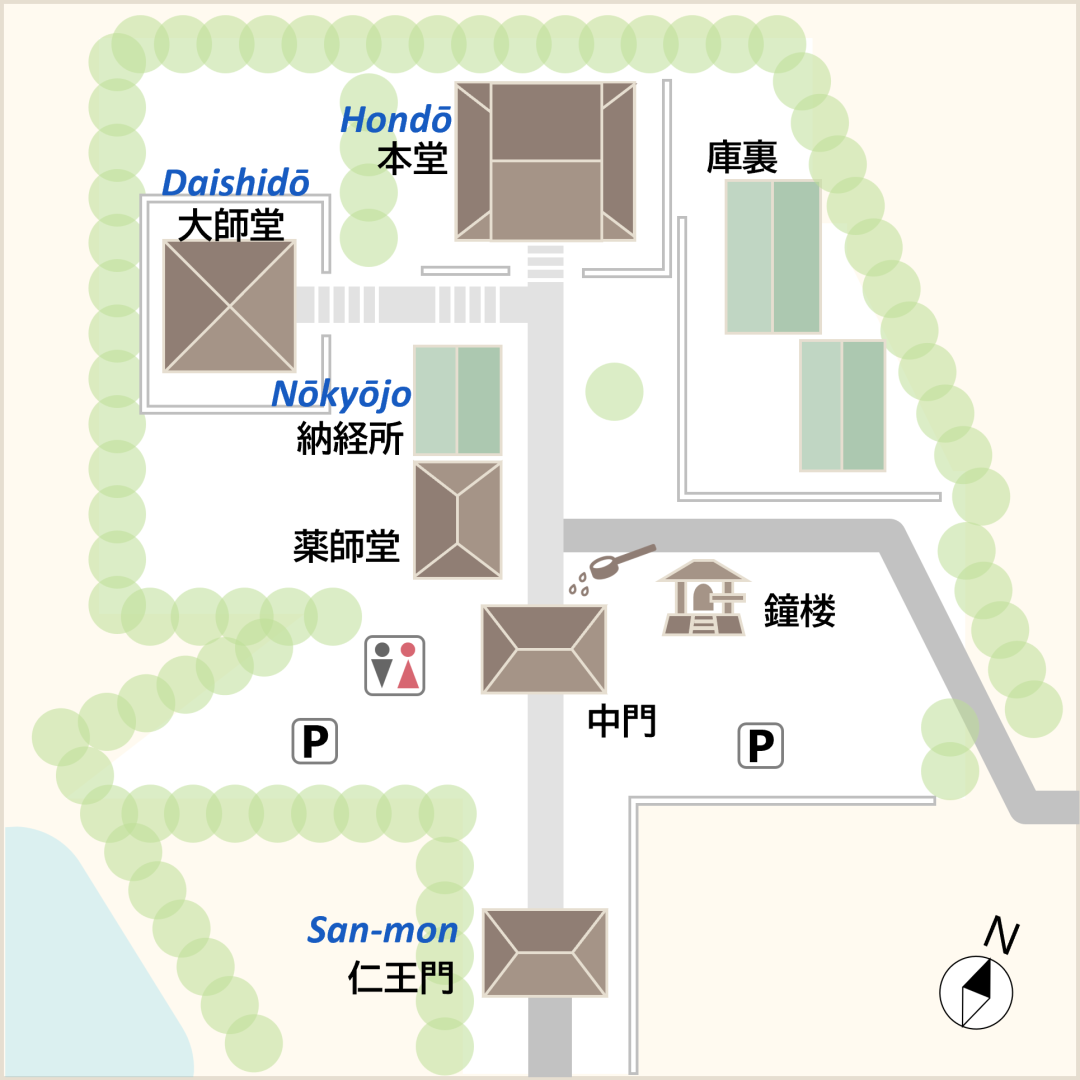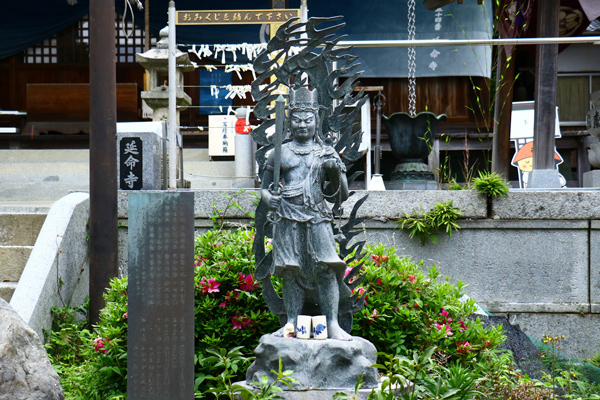The Shikoku Pilgrimage Temple Guide
Temple 54, Enmeiji

Precinct map

History of the temple
About six kilometers northwest of downtown Imabari, there is a 244-meter-high mountain called Mt. Chikamiyama, which is also the mountain name (temples are metaphorically called mountains) of Enmeiji. Enmeiji is said to have had seven major temple buildings on this mountain with 100 monk’s cells in the valley.
According to legend, in 720, at the order of Emperor Shomu (reigned 724-749), Gyoki carved a statue of Fudo Myōō, which is believed to be an incarnation of Dainichi Nyorai. He founded the temple with this statue as its principal image. In the Konin era (810-824), Kobo Daishi received an imperial order from Emperor Saga (reigned 809-823) to rebuild the temple as a center of religion and learning. The temple was renamed Fudōin Enmeiji (圓明寺) and designated an imperial temple. The name Enmeiji (圓明寺) continued until the Meiji Restoration (the latter half of the 19th century), but because of confusion with Temple 53, Enmyōji (圓明寺), which is not far away, which had the same Kanji, the name was changed to Enmeiji (延命寺), which had been another name for the temple since the Edo period (1603-1868).
The temple was repeatedly destroyed by fire, but it was rebuilt every time. In 1727 it was moved to its current location at the foot of Mt. Chikamiyama. Before then, in 1268, Gyonen (1240-1321), a monk of the Kegon sect, stayed in the monastery of Enmeiji and wrote Hasshu Koyo, which is said to be an introductory book for beginners in Buddhism. The Hasshu are the eight schools of Buddhism: Kusha, Jojitsu, Ritsu, Hosso, Sanron, Tendai, and Kegon, as well as the newly emerged Jodo. It is written in two volumes.
The temple has the second oldest Shinnen signpost in Shikoku. (Stone pilgrimage signposts created by Yūben Shinnen in the late 17th century.) There is also a Japanese andromeda tree in the precincts of the temple which has pretty white flowers for about a month in spring.
Highlights
Temple Gate
The gate was originally one of the gates of Imabari Castle and is made entirely of zelkova wood. It was brought here when Imabari Castle was demolished in the early Meiji period (1868-1912).
Hifuse Fudoson
The principal image is a rare statue of Fudo Myōō wearing a crown. It was named Hifuse (Fire Fighting ) because it has survived repeated fires.
Tomb of Ochi Magobei
It is said that Ochi Magobei, a village headman in Agata, saved farmers from starvation during the great famine that occurred in the Kyoho era (1716-1736).

Annual Events
| January 28 | Hatsu Fudo |
| February 3 | Setsubun Festival |
| April 8 | Hana Matsuri (Buddha's Birthday) |
| August 7 | Memorial Service for Ochi Magobei |
| August 23 | Segaki Hoyo (Ritual for Restless Spirits) |
| December 28 | Osame Fudo |
| December 31 | Joya no Kane (New Year’s Eve bell) |
Details
Names: Chikamizan, Hōshōin, Enmeiji
Denomination: Shingon sect, Buzan school
Principal image: Fudo Myōō
Founder: Gyoki
Founded: 720
Access
Address: 636, Agata-ko, Imabari City, Ehime 794-0081
Phone: 0898-22-5696
Parking: Available (free of charge)
Lodging: None
Official website: https://enmeiji.info/
